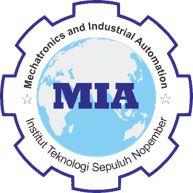Performance Test Membrane Contactor for CO2 Desorption from DEA
Abstract
Keywords
Full Text:
PDFReferences
M. Fatimura, R. Fitriyanti, and R. Masriatini “Penanganan gas asam (sour gas) yang terkandung dalam gas alam menjadi sweetening gas,” J. Redoks, vol. 3, no. 2, pp. 55-67, Juli-Des.2018. https://doi.org/10.31851/redoks.v3i2.2390
N.A. Rahim, N. Ghasem and M. Al-Marzouqi, “Absorption of CO2 from natural gas using different amino acid salt solutions and regeneration using hollow fiber membrane contactors,” Journal of Natural Gas Science and Engineering, vol 26, pp. 108-117, 2015.
N.I. Listiyana, Y. Rahmawati, S. Nurkhamidah, H.R. Syahnur, and Y. Zaelana, “CO2 desorption from activated DEA using membrane contactor with vacuum regeneration technology,” MATEC Web of Conf., vol 156, 08012, 2018, https://doi.org/10.1051/matecconf/201815608012.
A. Mansourizadeh and A.F. Ismail, “Hollow fiber gas-liquid membrane contactors for acid gas capture: A review,” J. Hazard. Mater., vol. 171, no. 1–3, pp. 38–53, Nov.2009, doi:10.1016/j.jhazmat.2009.06.026
M. Fang, S. Yan, Z. Luo, M. Ni, and K. Cen, “CO2 chemical absorption by using membrane vacuum regeneration technology,” Energy Procedia, 1(1), pp. 815–822, 2009, doi:10.1016/j.egypro.2009.01.108
P. Kosaraju, S. Kovvali, Korikov, and K.K. Sirkar, “Hollow fiber membrane contactor based CO2 absorption−stripping using novel solvents and membrane,” Industrial dan Engineering Chemistry Research, 44 (5), pp. 1250–1258, 2005, https://doi.org/10.1021/ie0495630
H. Kumazawa, “Absorption and desorption of CO2 by aqueous solution of sterically hindered 2-amino-2- methyl-1-propanol in hydrophobic microporous hollow fiber contained contactors.” Journal of Chemical Engineering Science, vol 55, 5531—5543, 2000, http://dx.doi.org/10.1080/00986440008912832
K. Shimada, I.N. Seekkuarachchi, H. Kumazawa, “Absorption of CO2 into aqueous solutions of sterically hindered methyl aminoethanol using a hydrophobic microporous hollow fiber contained contactor.” Chemical Engineering Communication, vol 193, 38-54, 2006. DOI: 10.1080/009864490923484
Y. Rahmawati, T. Iswanto, and M. Rifa’i, “Performance test of double crosses membrane contactor for simultaneous absorption-desorption of CO2 using diethanolamine,” Iptek of Journal Proceedings Series, 2015, pp. J632-191, https://iptek.its.ac.id/index.php/jps/article/viewFile/1178/1024
P.H.M. Feron and A.E. Jansen, “Capture of carbondioxide using membrane gas absorption and reuse in the horticultural industry,” Energy Convers.Vol.36, No.6-9, pp. 411-414, 1995.
A. Mansourizadeh, and A.F. Ismail, “CO2 Stripping from water through porous PVDF holow fiber membrane contactor,” Desalination, vol 273, pp. 386–390, 2011, doi:10.1016/j.desal.2011.01.055
R. Naim, A.F. Ismail, and A. Mansourizadeh, “Preparation of microporous PVDF hollow fiber membrane contactors for CO2 stripping from diethanolamine solution,” Journal of Membrane Science, 392–393, pp. 29–37, 2012, doi: 10.1016/j.memsci.2011.11.040
H. Nieminen, L. Järvinen, V. Ruuskanen, A. Laari, T. Koiranen, J. Ahola, “Insights into a membrane contactor-based demonstration unit for CO2 capture,” Separation and Purification Technology, 231, pp. 115951, 2020, https://doi.org/10.1016/j.seppur.2019.115951.
Q. He, J. Xi, W. Wang, L. Meng, S. Yan, “CO2 absorption using biogas slurry: Recovery of absorption performance through CO2 vacuum regeneration,” International Journal of Greenhouse Gas Control. 58, 103–113, 2017.
J.M. Vadillo, L. Gomez-Coma, A. Garea, A. Irabien, “Hollow fiber membrane contactors in CO2 desorption: A review,” Energy & Fuels. 35 111–136, 2021.
S. Yan, M. Fang, Z. Wang, Z. Luo, “Regeneration performance of CO2-rich solvents by using membrane vacuum regeneration technology: Relationships between absorbent structure and regeneration efficiency,” Applied Energy. 98, 357–367, 2012, https://doi.org/10.1016/j.apenergy.2012.03.055
M. Rahbari-Sisakht, A. F. Ismail, D. Rana, and T. Matsuura, “Carbon dioxide stripping from diethanolamine solution through porous surface modified PVDF hollow fiber membrane contactor,” J. Memb. Sci., vol. 427, pp. 270–275, Jan.2013.
J.M. Vadillo, D. Hospital-benito, C. Moya, L. Gomez-, J. Palomar, A. Garea, A. Irabien, “Modelling and simulation of hollow fiber membrane vacuum regeneration for CO2 desorption processes using ionic liquids,” Sep. and Purif. Tech. Vol 277, 119465, August 2021, https://doi.org/10.1016/j.seppur.2021.119465
S. Khaisri, D. deMontigny, P. Tontiwachwuthikul and R. Jiraratananon, “CO2 Stripping from Monoethanolamine Using a Membrane Contactor,” Journal of Membrane Science, vol 376, 110-118, 2011, doi: 10.1016/j.memsci.2011.04.005
M. Simioni, S.E. Kentish and G.W. Stevens, “Membrane stripping: desorption of carbon dioxide from alkali solvents,” Journal of Membrane Science, vol 378, 18-27, 2011, doi: 10.1016/j.memsci.2010.12.046
W. Zhang, Z. Deng, Q. Wang, J. Li, X. Qiu, “Experimental research on chemical desorption based on CO2-rich absorption solutions,” International Journal of Greenhouse Gas Control, 109, 103356, 2021, https://doi.org/10.1016/j.ijggc.2021.103356
N. H. Mohammed, S.M.R. ahmed, H. Al-Naseri, M. Al-Dahhan, “Enhancement of CO2 desorption from MEA-based nanofluids in membrane contactor: Simulation study,” Chemical Engineering & Processing: Process Intensification, 168, 108582, 2021, https://doi.org/10.1016/j.cep.2021.108582
J.M. Vadillo, L.G. Coma, A. Garea, A. Irabien, “ Non-dispersive CO2 separation process using vacuum desorption and ionic liquids as carbon capture and utilization innovative technology,” Journal Separation and Purification technology, 301, 121923, 2022.
J.B. Chung, J.P. deRocher, E.L. Cussler,”Distillation with nanoporous or coated hollow fibers,” Journal of Membrane Science, 257, pp 3-10. 2005.
S. Koonaphapdeelert, Z.T. Wu, K. Li, “Carbon dioxide stripping in ceramic hollow fiber membrane contactors,” Chem. Eng. Sci., 64, pp 1 – 8, 2009.
E.D. Snijder, M.J.M. te Riele, G.F. Versteeg, W.P.M. van Swaaij, “Diffusion coefficients of several aqueous alkanolamine solutions”, J. Chem. Eng. Data, 38, pp. 475 -480, 1993.
R.J. Hook, “An investigation of some sterically hindered amines as potential carbon dioxide scrubbing compounds,” Ind. Eng. Chem. Res., 36, pp. 1779 – 17790, 1997.
DOI: http://dx.doi.org/10.12962%2Fj23378557.v9i1.a16642
Refbacks
- There are currently no refbacks.
This work is licensed under a Creative Commons Attribution 4.0 International License. IPTEK The Journal of Engineering published by Pusat Publikasi Ilmiah, Institut Teknologi Sepuluh Nopember.
Please contact us for order or further information at: email: iptek.joe[at]gmail.com Fax/Telp: 031 5992945. Editorial Office Address: Pusat Riset Building 6th floor, ITS Campus, Sukolilo, Surabaya 60111, Indonesia.








